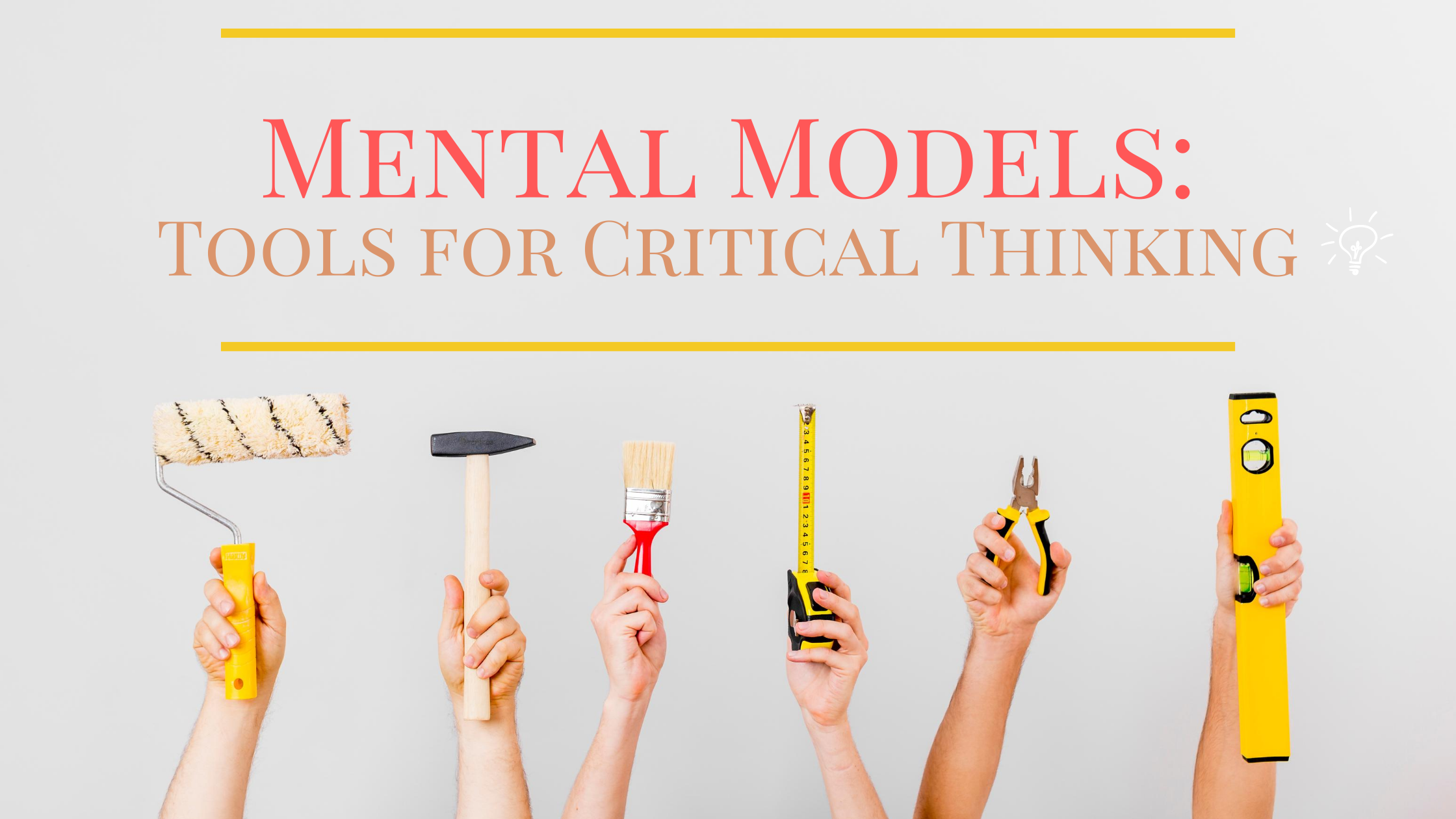What are Mental Models?

Mental models are tools we use to understand the world and inform our decisions. They help us think outside the box with an eye for the future. It’s not about raw intelligence or even how smart you are. It’s about having the right mental tools to help us make complicated decisions and think critically about our world.
You need to diversify your set of mental models, never depending on one too heavily. It’s like the saying, “If you have a hammer, everything looks like a nail”. Our goal with mental models is having many tools that can inform our logic and decision making.
A Compass Is Not A Map
Mental models don’t replace our need to reason independently, just like tools don’t replace our need to know when and how to use them. Your flexibility as a thinker will continue to grow as you learn how to use more and more mental models. With a hammer, you can build a box. With a hammer, saw, drill, and ruler, you could build a house.
It’s tempting to try and find shortcuts to reason with models and theories which are supposed to describe the full truth. But nothing describes the full truth. Even well-established scientific theories don’t claim to do this either. So how do we determine the value of theories? We value them through their use to us– tools are about utility.
These desires for shortcuts can be seen in the availability heuristic. This is when we use immediate examples from past experience or knowledge, and let it heavily influence our understanding of new information and problems. The problem with this is that it doesn’t allow us to take a reason unbiased approach to complicated issues. We also are likely to misjudge the frequency of something happening.
A major benefit to mental models is reminding us of how unreasonable and unreliable our initial perceptions can be. Mental models are like the gutter guards for bowling, not allowing us to veer too far off track. But using the gutter guards isn’t going to guarantee we get a strike just like using mental models isn’t going to guarantee we make the right decisions.
Examples of Mental Models
Second Order Thinking
Second-order Thinking informs our decisions by reminding us to keep an eye on the future. Naturally, we are prone to thinking about immediate consequences. If I tip this glass, the water will spill onto the rug. Using this mental model, you instead think, if I tip this glass and spill onto the rug, it will soak in and be harder to clean and so on.
We are forced to think about the multitude of degrees which effects can unfold, like a butterfly flapping its wings, or the first domino.
Occam’s Razor
People are predisposed to creating elaborate theories to explain something. Our imaginations run wild and our emotions come into play. Occam’s razor reminds us to cut this out. It states the theory with the least assumptions is the most likely.
Using this mental model is a good way to get to the bottom of competing theories and point us towards the most likely solutions. This model applies to almost anything where problem solving is needed. You can use it as an inventor, architect, doctor, psychologist, or as an everyday person in everyday situations.
First Principles
This model has been used by the most creative minds to come up with groundbreaking inventions and solutions to problems. First Principles tell us to start from the basics. Boil it all down to facts that stand on their own and put it all back together in a better way.
Create a Toolkit
Your models are incomplete when used alone. As you acquire more and more mental models, you should be connecting them and using them together.
Think of your models as the bones of a structure. You can’t build big if there isn’t a vast structure in place. The bigger you build the stronger your foundation needs to be. Remember, we are trying to build a house, not a box.
This is part of what makes us human. Our ability to build tools, and then build things with those tools, takes us away from our normal capabilities. Keep learning, keep building, and keep thinking.

Recent Comments